Farmland Changes and Their Ecological Impact in the Huangshui River Basin
Abstract
:1. Introduction
2. Materials and Methods
2.1. The Study Area
2.2. Data Sources
2.3. Research Method
2.3.1. Data Acquisition and Analysis of Farmland Changes
2.3.2. Calculation of the NDVI Change Rate
2.3.3. Ecological Impact of Farmland Changes
3. Results
3.1. Farmland Changes and Their Spatial Variation
3.2. Impact of Farmland Changes on the Regional NDVI Value
4. Discussion
4.1. Farmland Area Changes and Causes
4.2. Causes of Greening Trend and Contribution of Farmland Changes
4.3. Implications for Farmland Protection
5. Conclusions
Author Contributions
Funding
Data Availability Statement
Acknowledgments
Conflicts of Interest
References
- Ge, D.Z.; Long, H.L.; Zhang, Y.N.; Ma, L.; Li, T.T. Farmland transition and its influences on grain production in China. Land Use Policy 2018, 70, 94–105. [Google Scholar] [CrossRef]
- Wu, Y.Z.; Shan, L.P.; Guo, Z.; Peng, Y. Cultivated land protection policies in China facing 2030: Dynamic balance system versus basic farmland zoning. Habitat Int. 2017, 69, 126–138. [Google Scholar] [CrossRef]
- Cheng, L.; Jiang, P.H.; Chen, W.; Li, M.C.; Wang, L.Y.; Gong, Y.; Pian, Y.Z.; Xia, N.; Duan, Y.W.; Huang, Q.H. Farmland protection policies and rapid urbanization in China: A case study for Changzhou City. Land Use Policy 2015, 48, 552–566. [Google Scholar]
- Zhang, C.; Wang, X.; Liu, J.Y. Changes in quantity, quality, and pattern of farmland in a rapidly developing region of China: A case study of Ningbo region. Landsc. Ecol. Eng. 2019, 15, 323–336. [Google Scholar] [CrossRef]
- Fei, D.Q.; Cheng, Q.; Mao, X.F.; Liu, F.G.; Zhou, Q. Land use zoning using a coupled gridding-self-organizing feature maps method: A case study in China. J. Clean. Prod. 2017, 161, 1162–1170. [Google Scholar] [CrossRef]
- Dong, B.Q.; Qin, T.L.; Wang, Y.; Zhao, Y.; Liu, S.S.; Feng, J.M.; Li, C.H.; Zhang, X. Spatiotemporal variation of nitrogen and phosphorus and its main influencing factors in Huangshui River Basin. Environ. Monit. Assess. 2021, 193, 292. [Google Scholar] [CrossRef]
- Zhao, C.C.; Dong, X.; Xin, W.R.; Wang, S.; Yang, Q.M. Effect on soil and water conservation from different models of conversion of farmland to forest in Huangshui River at Qinghai. J. Soil Water Conserv. 2009, 23, 26–29. (In Chinese) [Google Scholar]
- Zhao, C.C.; Wang, S.; Sun, G.X.; Yang, Q.M.; Yang, N.G.; Zhang, W.J.; Deng, X. Study on soil erosive ness in the area of returning farmland to forest in Huangshui River Watershed of Qinghai Province. For. Resour. Manag. 2010, 2, 73–77. (In Chinese) [Google Scholar]
- Feng, J.M.; Dong, B.Q.; Qin, T.L.; Liu, S.S.; Zhang, J.W.; Gong, X.F. Temporal and spatial variation characteristics of NDVI and its relationship with environmental factors in Huangshui River Basin from 2000 to 2018. Pol. J. Environ. Stud. 2021, 30, 3043–3063. [Google Scholar] [CrossRef]
- Qiao, B.H.; Qu, Y.B.; Ye, X. A research on space-time evolution of cultivated land pressure: Taking Hehuang valley in Qinghai Province as an example. Rev. Econ. Manag. 2015, 31, 155–160. (In Chinese) [Google Scholar]
- Cheng, Q.; Cai, Y.L.; Liu, F.G.; Zhou, Q.; Zhang, H.F. Farmers’ perception to farmland conversion: A questionnaire survey in Xining City, Qinghai Province, China. Chin. Geogr. Sci. 2013, 23, 634–646. [Google Scholar] [CrossRef] [Green Version]
- Yu, M.; Yang, Y.J.; Chen, F.; Zhu, F.W.; Qu, J.F.; Zhang, S.L. Response of agricultural multifunctionality to farmland loss under rapidly urbanizing processes in Yangtze River Delta, China. Sci. Total Environ. 2019, 666, 1–11. [Google Scholar] [CrossRef]
- Wei, Z.H.; Gu, X.H.; Sun, Q.; Hu, X.Q.; Gao, Y.B. Analysis of the spatial and temporal pattern of changes in abandoned farmland based on long time series of remote sensing data. Remote Sens. 2021, 13, 2549. [Google Scholar] [CrossRef]
- Wang, M.; Xu, Q.C.; Fan, Z.N.; Sun, X.F. The imprint of built-up land expansion on cropland distribution and productivity in Shandong Province. Land 2021, 10, 639. [Google Scholar] [CrossRef]
- Gong, Y.L.; Li, J.T.; Li, Y.X. Spatiotemporal characteristics and driving mechanisms of arable land in the Beijing-Tianjin-Hebei region during 1990–2015. Socio-Econ. Plan. Sci. 2019, 70, 100720. [Google Scholar] [CrossRef]
- Yu, D.; Hu, S.G.; Tong, L.Y.; Xia, C. Spatiotemporal dynamics of cultivated land and its influences on grain production potential in Hunan Province, China. Land 2020, 9, 510. [Google Scholar] [CrossRef]
- Song, W.; Pijanowski, B.C.; Tayyebi, A. Urban expansion and its consumption of high-quality farmland in Beijing, China. Ecol. Indic. 2015, 54, 60–70. [Google Scholar] [CrossRef]
- Chao, Z.H.; Zhang, P.D.; Wang, X.F. Impacts of urbanization on the net primary productivity and cultivated land change in Shandong Province, China. J. Indian Soc. Remote Sens. 2018, 46, 809–819. [Google Scholar] [CrossRef]
- Xu, S. Temporal and spatial characteristics of the change of cultivated land resources in the black soil region of Heilongjiang Province (China). Sustainability 2019, 11, 38. [Google Scholar] [CrossRef] [Green Version]
- Cao, X.; Chen, X.H.; Zhang, W.W.; Liao, A.P.; Chen, L.J.; Chen, Z.G.; Chen, J. Global cultivated land mapping at 30 m spatial resolution. Sci. China Earth Sci. 2016, 59, 2275–2284. [Google Scholar] [CrossRef]
- Liu, J.Y.; Kuang, W.H.; Zhang, Z.X.; Xu, X.L.; Qin, Y.W.; Ning, J.; Zhou, W.C.; Zhang, S.W.; Li, R.D.; Yan, C.Z.; et al. Spatiotemporal characteristics, patterns and causes of land use changes in China since the late 1980s. J. Geogr. Sci. 2014, 24, 195–210. [Google Scholar] [CrossRef]
- Liu, F.; Qin, T.L.; Yan, D.H.; Wang, Y.; Dong, B.Q.; Wang, J.W.; Nie, H.J.; He, S.; Liu, S.S. Classification of instream ecological water demand and crucial values in a semi-arid river basin. Sci. Total Environ. 2020, 712, 136409. [Google Scholar] [CrossRef] [PubMed]
- Bi, W.X.; Wang, K.; Weng, B.S.; Yan, D.H.; Liu, S.Y. Does the returning farmland to forest program improve the ecosystem stability of rhizosphere in winter in alpine regions? Appl. Soil Ecol. 2021, 165, 104011. [Google Scholar] [CrossRef]
- Zhou, B.; Wang, H.W.; Zhang, Q.Q. Assessment of the evolution of groundwater chemistry and its controlling factors in the Huangshui River Basin of northwestern China, using hydrochemistry and multivariate statistical techniques. Int. J. Environ. Res. Public Health 2021, 18, 7551. [Google Scholar] [CrossRef] [PubMed]
- Bai, X.X.; Yan, C.Z. Effects of eco-environment construction projects on soil and water loss in Huangshui river basin. Bullet Soil Water Conserv. 2013, 33, 217–218. [Google Scholar]
- Zhang, C.G.; Shen, Y.J.; Liu, F.G.; Meng, L. Changes in reference evapotranspiration over an agricultural region in the Qinghai-Tibetan plateau, China. Theor. Appl. Climatol. 2016, 123, 107–115. [Google Scholar] [CrossRef]
- Yu, H.; Du, R.X.; Tao, H.P.; Liu, B.T.; Kong, B. Quantitative analysis of Huangshui River Basin landscape over last twenty years using RS and GIS. Int. Conf. Sustain. Dev. 2017, 94, 232–236. [Google Scholar]
- Sydsaeter, K.; Hammond, P.; Strom, A. Essential Mathematics for Economic Analysis; FT Prentice Hall: Hoboken, NJ, USA, 2008. [Google Scholar]
- Zhao, J.Y.; Peng, J.H. Spatiotemporal variation of the vegetation coverage in Qinghai Plateau based on MODIS NDVI data. J. Arid Land Resour. Environ. 2016, 30, 67–73. (In Chinese) [Google Scholar]
- Liu, S.L.; Li, W.P.; Qiao, W.; Hu, Y.B.; Wang, Z.K. Effect of natural conditions and mining activities on vegetation variations in arid and semiarid mining regions. Ecol. Indic. 2019, 103, 331–345. [Google Scholar] [CrossRef]
- Sun, B.; Li, Z.Y.; Gao, W.T.; Zhang, Y.Y.; Gao, Z.H.; Song, Z.L.; Qin, P.Y.; Tian, X. Identification and assessment of the factors driving vegetation degradation/regeneration in drylands using synthetic high spatiotemporal remote sensing Data-A case study in Zhenglanqi, Inner Mongolia, China. Ecol. Indic. 2019, 107, 105614. [Google Scholar] [CrossRef]
- Feng, Z.M.; Zhang, P.T.; Song, Y. Food security: The impact of land conversion from farmland to forest or grassland on grain production in Northwest China. J. Nat. Resour. 2002, 17, 299–306. (In Chinses) [Google Scholar]
- Zeng, Y.N.; Jin, W.P.; Wang, H.M.; Tan, L.X. Analysis and evaluation of cultivated land decrease in eastern part of Qinghai Plateau. Trans. Chin. Soc. Agric. Eng. 2013, 29, 214–222. (In Chinese) [Google Scholar]
- Guo, Y.C.; Li, H.R. Analysis on the present situation and benefit of returning cultivated farmland to forest in Qinghai Province. Mod. Agric. Sci. Technol. 2018, 19, 209–210. (In Chinese) [Google Scholar]
- Zhou, Y.; Li, X.H.; Liu, Y.S. Land use change and driving factors in rural China during the period 1995–2015. Land Use Policy 2020, 99, 105048. [Google Scholar] [CrossRef]
- Jin, K.; Wang, F.; Han, J.Q.; Shi, S.Y.; Yu, W.B. Contribution of climatic change and human activities to vegetation NDVI change over China during 1982-2015. Acta Geogr. Sin. 2020, 75, 961–974. (In Chinses) [Google Scholar]
- Pang, G.J.; Wang, X.J.; Yang, M.X. Using the NDVI to identify variations in, and responses of, vegetation to climate change on the Tibetan Plateau from 1982 to 2012. Quat. Int. 2016, 444, 87–96. [Google Scholar] [CrossRef]
- Cheng, S.K.; Xu, Z.R.; Xie, G.D.; Zhen, L.; Wang, L.E.; Guo, J.H.; Hou, P.; He, Z.H. The history of China’s food security in the past hundred years. J. Agric. 2018, 8, 186–192. (In Chinese) [Google Scholar]
- Liu, L.T.; Liu, X.J.; Lun, F.; Wu, L.; Lu, C.X.; Guo, J.H.; Qu, T.T.; Liu, G.; Shen, L.; Cheng, S.K. Research on China’s food security under global climate change background. J. Nat. Resour. 2018, 33, 927–939. (In Chinese) [Google Scholar]
- Huang, Z.H.; Du, X.J.; Salvador, C. How does urbanization affect farmland protection? Evidence from China. Resour. Conserv. Recycl. 2019, 145, 139–147. [Google Scholar] [CrossRef] [Green Version]
- Li, M. The effect of land use regulations on farmland protection and non-agricultural land conversions in China. Agric. Resour. Econ. 2019, 63, 643–667. [Google Scholar] [CrossRef] [Green Version]
- Zhang, L.G.; Bao, B.F.; Dong, L. Spatial and temporal pattern evolution of grain yield and spatial heterogeneity of driving factors in Poyang Lake eco economic zone. Econ. Geogr. 2018, 38, 154–161. (In Chinese) [Google Scholar]
- Li, M.W.; Wang, Z.H.; Zhang, G.S. Re-discussion of agricultural policies change on high-quality output effect of grain: Based on Nerlove dynamic analysis model. Agric. Econ. Manag. 2019, 6, 73–84. (In Chinese) [Google Scholar]
- Daniels, T.L. Assessing the performance of farmland preservation in America’s farmland preservation heartland: A policy review. Soc. Nat. Resour. 2020, 33, 758–768. [Google Scholar] [CrossRef]
- Tan, R.; Beckmann, V.; Van, D.B.; Qu, F. Governing farmland conversion: Comparing China with the Netherlands and Germany. Land Use Policy 2009, 26, 961–974. [Google Scholar] [CrossRef]
- Jentzsch, H. Tracing the local origins of farmland policies in Japan-local-nation policy transfer and endogenous institutional change. Soc. Sci. Jpn. J. 2017, 20, 243–260. [Google Scholar] [CrossRef]
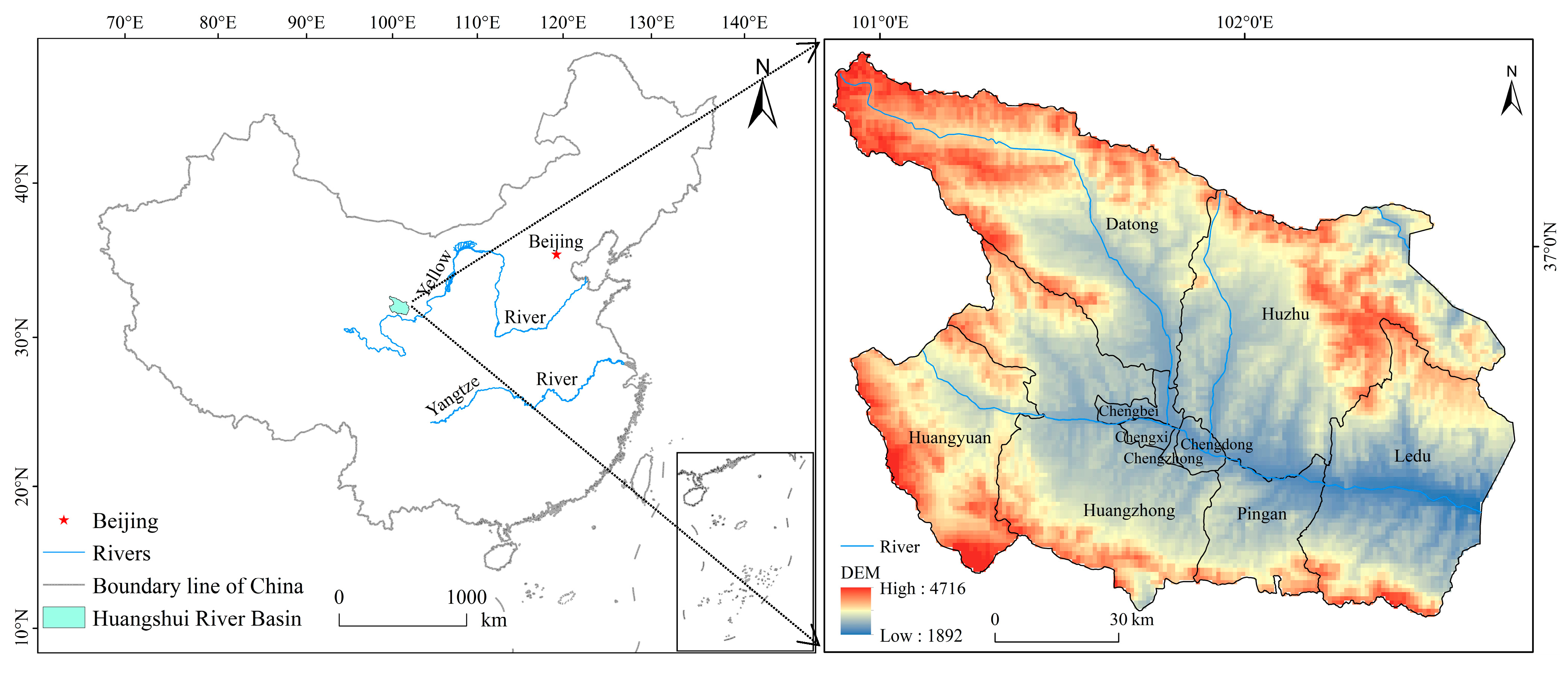
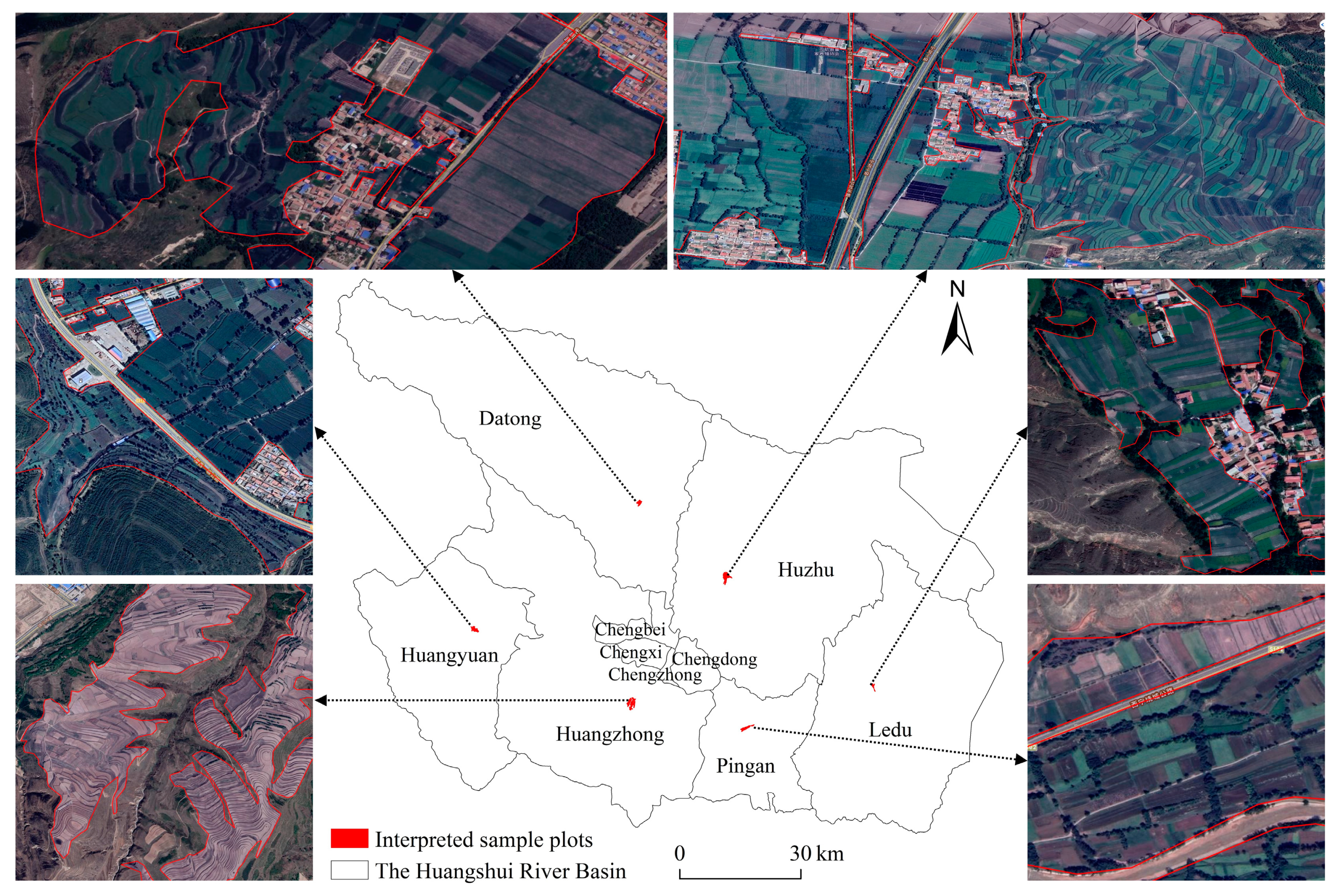
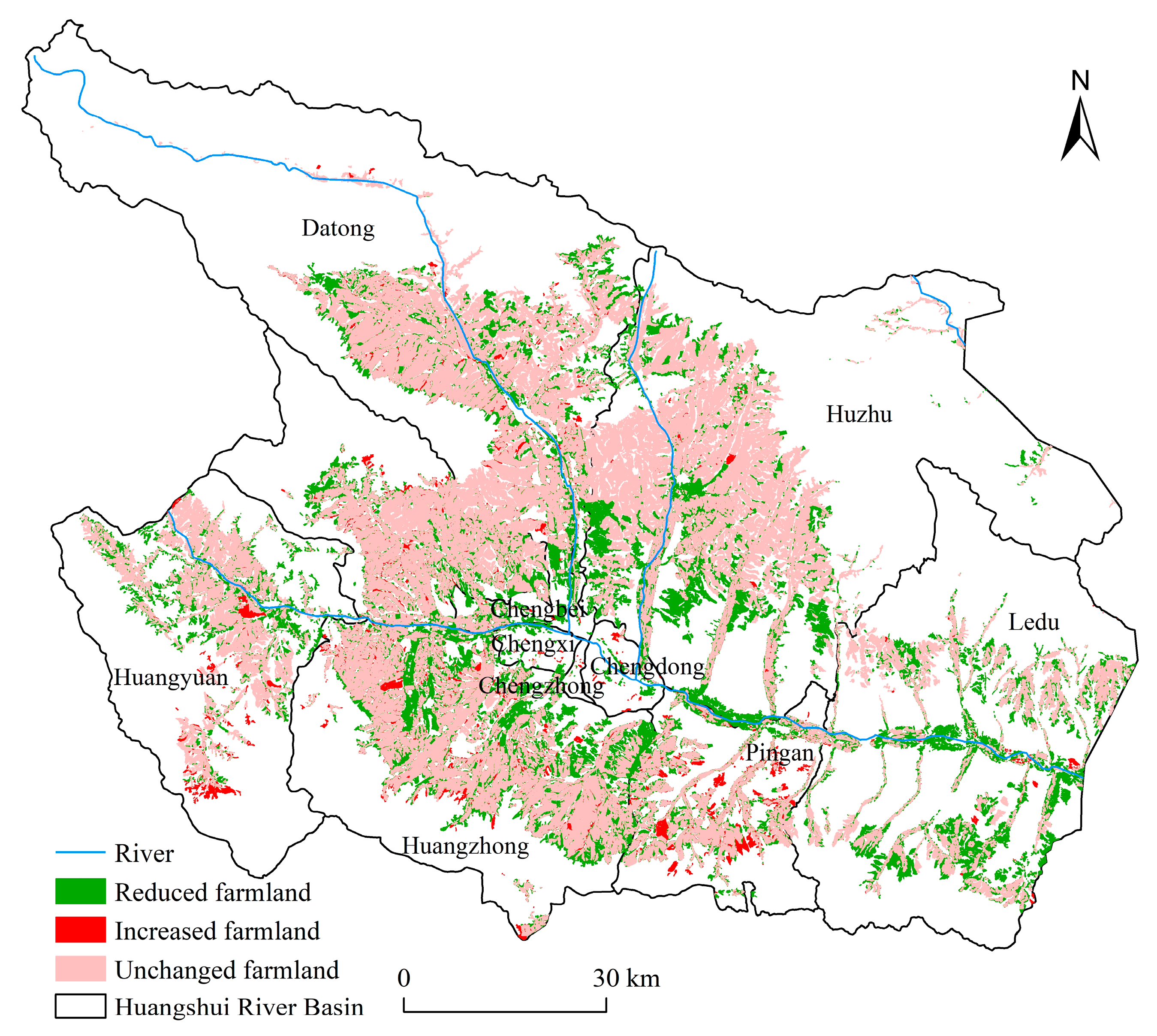
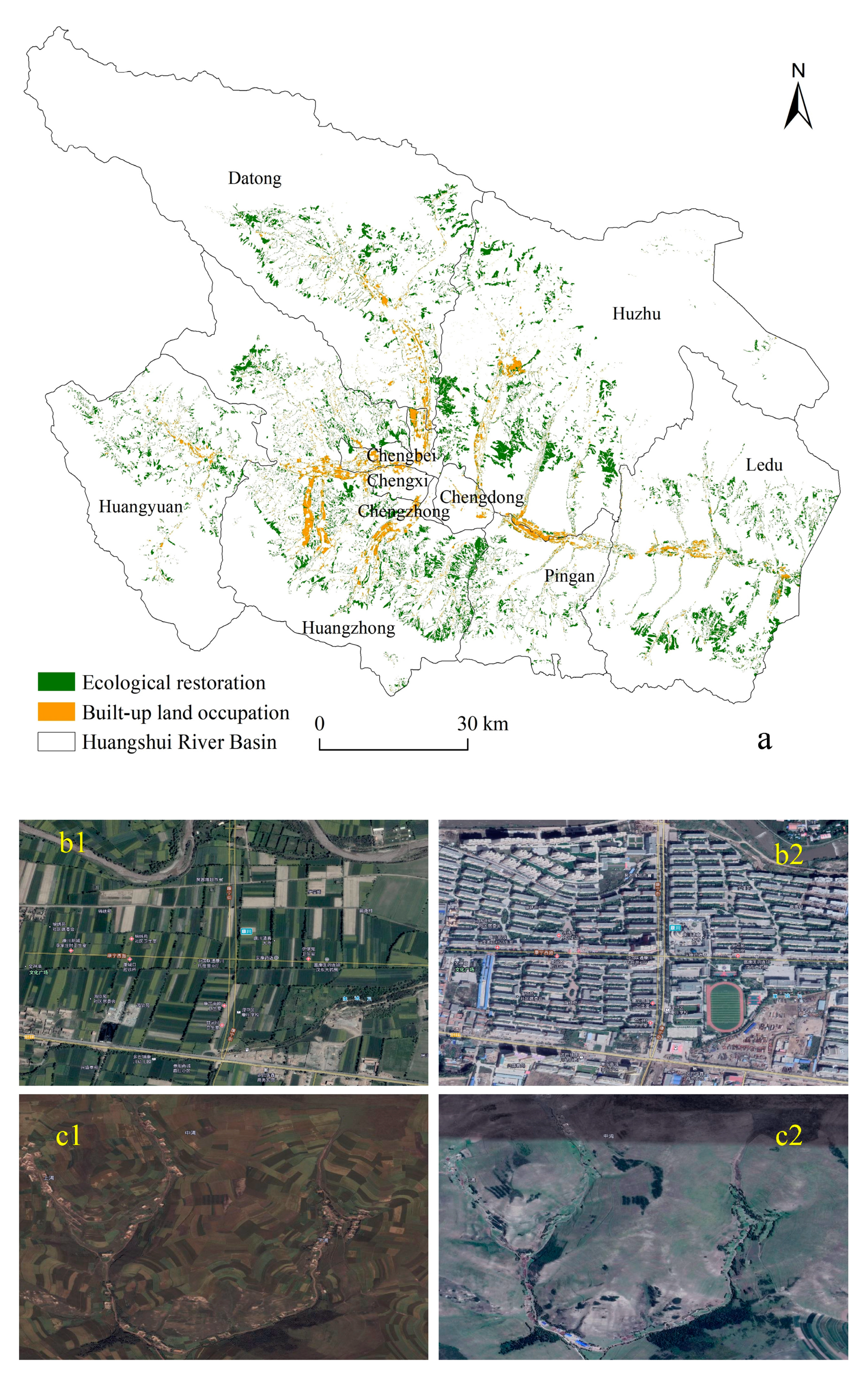
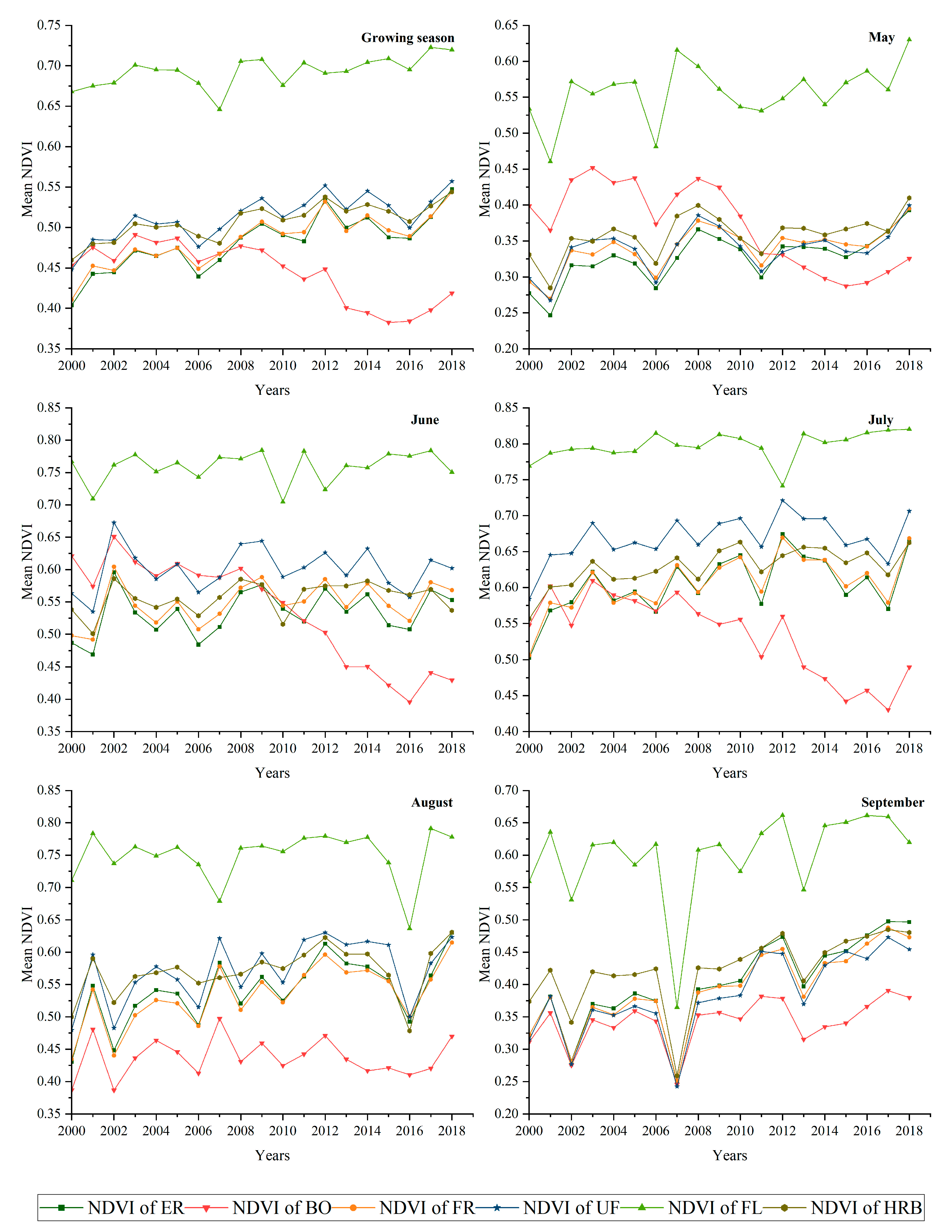
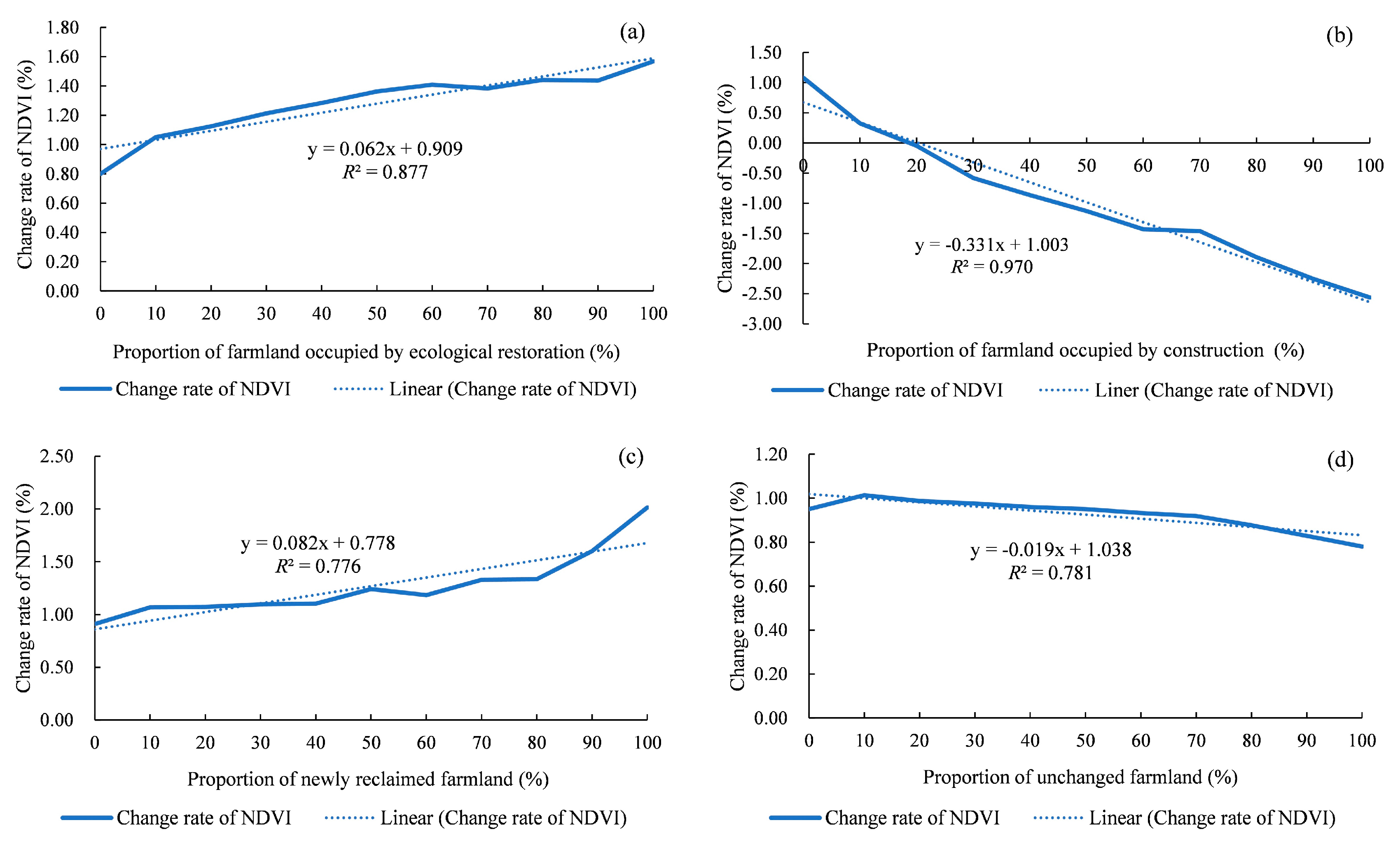
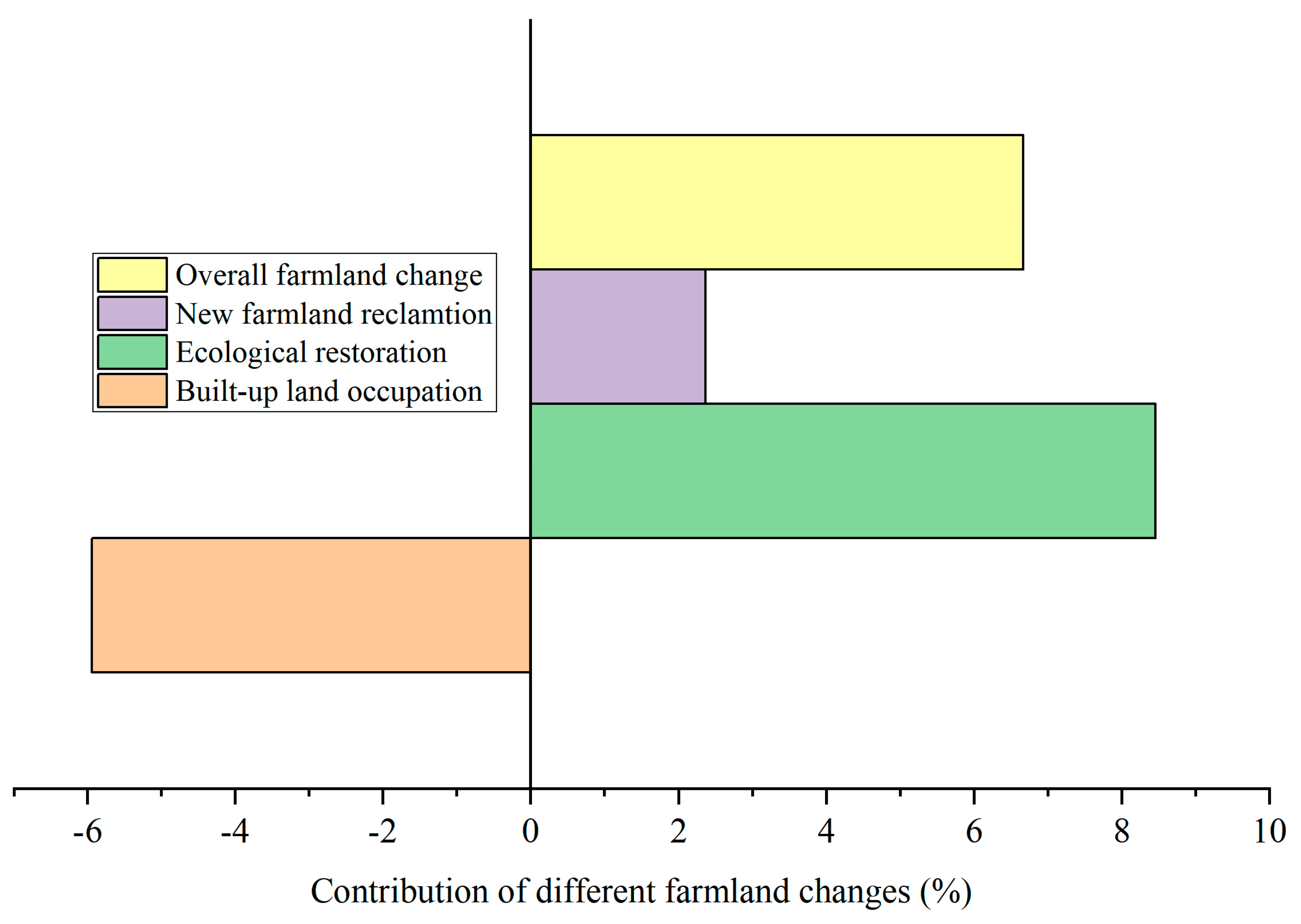
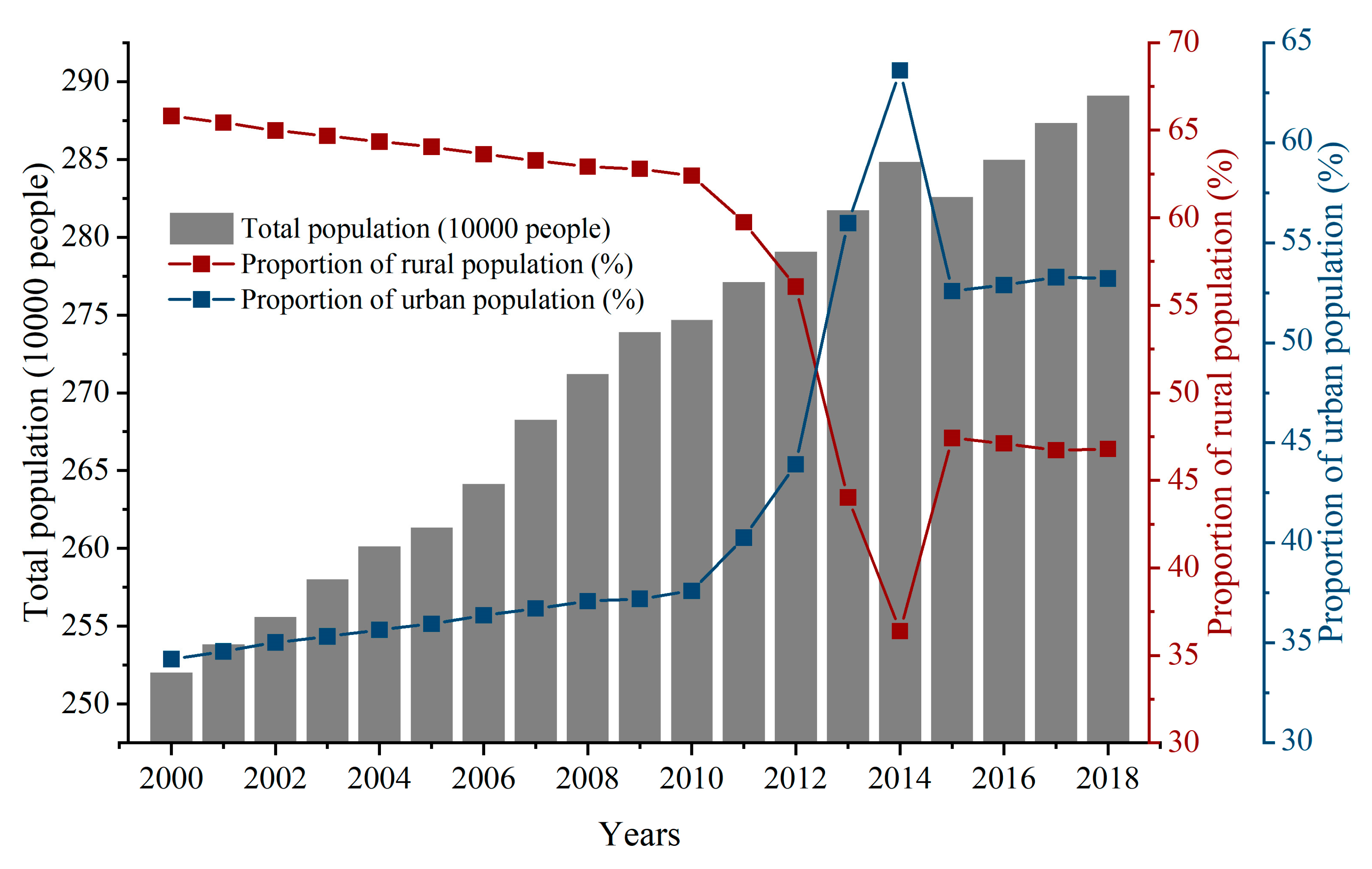
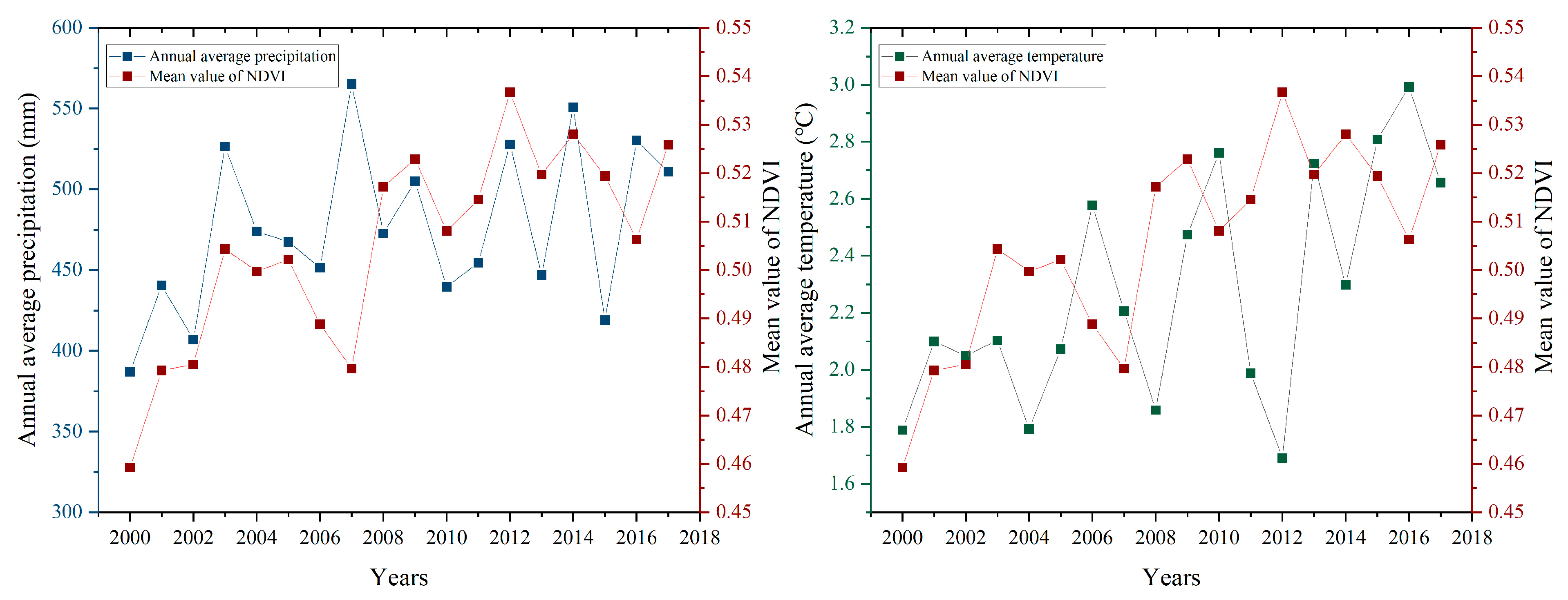
| County | Farmland Area (k ha) | Area Change (%) | Annual Change rate (%) | |
|---|---|---|---|---|
| 2000 | 2018 | |||
| Chengxi | 0.70 | 0.10 | −85.03 | −10.01 |
| Chengbei | 4.19 | 1.64 | −60.82 | −5.07 |
| Chengdong | 0.62 | 0.30 | −51.81 | −3.97 |
| Ledu | 31.67 | 17.23 | −45.59 | −3.32 |
| Chengzhong | 0.04 | 0.03 | −42.78 | −3.05 |
| Huzhu | 80.86 | 61.54 | −23.90 | −1.51 |
| Huangzhong | 90.78 | 69.85 | −23.05 | −1.45 |
| Huangyuan | 27.08 | 22.35 | −17.49 | −1.06 |
| Datong | 68.18 | 57.37 | −15.86 | −0.95 |
| Pingan | 16.04 | 14.61 | −8.91 | −0.52 |
| Total | 320.15 | 245.01 | −23.47 | −1.48 |
| Period | HRB | ER | BO | FR | UF | FL |
|---|---|---|---|---|---|---|
| Annual | 8.27 | 14.55 | 18.02 | 13.40 | 10.14 | 3.90 |
| May | 21.45 | 30.89 | 41.08 | 25.22 | 26.55 | 12.57 |
| June | 7.54 | 11.80 | 27.29 | 10.40 | 9.15 | 4.08 |
| July | 6.52 | 11.09 | 19.10 | 10.38 | 6.88 | 2.88 |
| August | 11.38 | 17.01 | 15.56 | 16.29 | 14.69 | 6.67 |
| September | 29.48 | 41.09 | 30.03 | 39.69 | 41.41 | 18.67 |
Publisher’s Note: MDPI stays neutral with regard to jurisdictional claims in published maps and institutional affiliations. |
© 2021 by the authors. Licensee MDPI, Basel, Switzerland. This article is an open access article distributed under the terms and conditions of the Creative Commons Attribution (CC BY) license (https://creativecommons.org/licenses/by/4.0/).
Share and Cite
Wei, H.; Lu, C.; Liu, Y. Farmland Changes and Their Ecological Impact in the Huangshui River Basin. Land 2021, 10, 1082. https://doi.org/10.3390/land10101082
Wei H, Lu C, Liu Y. Farmland Changes and Their Ecological Impact in the Huangshui River Basin. Land. 2021; 10(10):1082. https://doi.org/10.3390/land10101082
Chicago/Turabian StyleWei, Hui, Changhe Lu, and Yaqun Liu. 2021. "Farmland Changes and Their Ecological Impact in the Huangshui River Basin" Land 10, no. 10: 1082. https://doi.org/10.3390/land10101082








